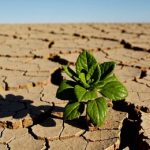Soil Organic Matter
Soil organic matter refers to the remains of plants, animals and microbes, in different decomposition stages. It consists of:
- Living soil organisms and plant residues
- Partially decomposed organic matter (detritus)
- Fully decomposed, stable organic matter, also referred to as Humus
Most soils contain 1-6% organic matter.
BENEFITS OF ORGANIC MATTER
Organic matter influences many of the physical, chemical and biological properties of the soil. Soil organic matter:
- Increases soil CEC (Cation Exchange Capacity)
- Improves soil structure and water holding capacity
- Contributes nutrients, mainly nitrogen, phosphorus and sulfur. This is a result of nutrient mineralization
- Improves the absorption of nutrients by plants (chelation of micronutrient)
- Increases soil buffer capacity (resistance to changes in pH)
- Improves soil biodiversity
Microorganisms break down organic matter to small molecules until a stable humus is formed. The resulting humus does not contribute much nutrients to soil, because it is already decomposed and stable.
Therefore, the chemical composition of the humus varies depending on the different types of organisms and plant residues from which it was formed.
Furthermore, the same factors that affect the activity of microorganisms in soil also affect the decomposition of soil organic matter and formation of humus:
- Soil pH – decomposition of organic matter is slowed down at soil pH that is too acidic or alkaline.
- Temperature – decomposition rate of organic matter is increased in higher temperatures.
- Soil moisture – biological activity requires moisture and oxygen. Therefore, optimal conditions for organic matter decomposition will occur at around field capacity. Soil saturation conditions, on the other hand, delay microbial activity.
- Soil texture – the breakdown of organic matter is usually better in light-textured soils, than in clay soils because the small clay particles and small pores “protect” the organic matter from microorganisms.
The CEC of colloidal humus is very high, much higher than the CEC of clay minerals. This is due to the negative charges it carries in the form of functional groups of carboxyl (-COOH) and hydroxyl (-OH).
Therefore, soils with high organic matter content are more fertile than soils with low organic matter content.
In fact, between 20 and 70% of the CEC of many soils is due to colloidal humic substances.
|
Clay mineral / Organic matter
|
CEC, meq/100g
|
|
Kaolinite
|
3 – 15
|
|
Illite
|
20 – 40
|
|
Montmorillonite
|
60 – 100
|
|
Humus
|
100 – 300
|
The CEC of soil organic matter depends on the pH of the soil, where higher pH results in higher CEC. As a result, hydrogen ions H+ are released from the carboxyl groups and more negative sites are formed on the surface of the organic colloids.
NUTRIENT MINERALIZATION
The main nutrient contributed by soil organic matter is nitrogen. Nitrogen becomes available for plants in the mineralization process, in which organic nitrogen is converted to inorganic nitrogen, which is available for plants. This process is performed by microorganisms.
Several models to estimate the amount of nitrogen release as a result of mineralization of organic nitrogen were developed. However, due to the complexity of nitrogen dynamics in soil, many assumptions must be done. Therefore, further research is required, and new models are being developed.
A relatively simple model was proposed by Stanford and Smith (Stangord, G. and Smith, S. J. 1972. Nitrogen mineralization potentials of soils. Soil Sci. Soc. Am. Proc. 36:465472). The equation proposed was:
Nt = N0(1 – e -kt)
where Nt is cumulated N mineralized (mg kg-1)
t – time (wk)
N0 – the potentially mineralizable N
k – rate constant (wk-1)
Rough estimates of the amount of nitrogen released from organic matter are given in the following table.
| % organic matter in soil | Estimated amount of nitrogen released (lbs/acre/year) |
| 1% | 15-25 |
| 2% | 25-55 |
| 3% | 55-70 |
DETERMINATION OF SOIL ORGANIC MATTER
The organic matter content of soils is evaluated by measuring the organic carbon in the soil. The two main methods used are the Walkley & Black acid wet oxidation method and the mass loss on ignition method. The first method is most accurate for soils with less than 2% organic matter, while the mass loss on ignition method is best for soils with more than 6% organic matter.
Walkley & Black’s method involves oxidizing the organic matter in the soil by potassium dichromate (K2Cr2O7) and sulfuric acid. The mass loss of ignition method is based on weight loss as a result of combustion of organic matter on applying high temperatures.
Organic carbon content can be converted to organic matter using the following conversion factor:
OM (%) = Total Organic Carbon (%) x 1.72
SUMMARY TIPS:
- Incorporate organic matter into your soil to improve its structure, water-holding capacity, and nutrient-holding capacity.
- Use a combination of green and brown organic matter to provide a balanced source of nutrients for your plants.
- Regularly adding organic matter to your soil can help to improve its structure and increase its ability to retain water and nutrients.
- Choose organic matter sources that are high in nutrients and have a balanced carbon-to-nitrogen ratio to ensure optimal plant growth.
- Incorporating organic matter into your soil can also help to improve its ability to support a diverse range of soil microbes, which can contribute to healthy plant growth.








